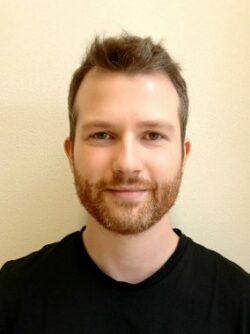Fluorescence Spectroscopy & Single Molecule Fluorescence
Application
Single-molecule fluorescence allows for the observation of individual molecules in real-time, giving insight into how molecules behave and interact with each other. Such level of detail would be impossible with traditional ‘bulk’ assays due to averaging which obscures important information. Using single-molecule Förster resonance energy transfer (FRET) we characterise the structure and dynamics of biomolecules in solution to help better understand the molecular mechanisms which determine their function.
Equipment
The single-molecule fluorescence lab houses two custom-built instruments which allow us to characterise the structure and dynamics of proteins with temporal resolution from nanoseconds to minutes.
- Diffusion-based time-resolved confocal microscope (480 & 560 nm)
- Total internal reflection fluorescence microscope (405, 480, 560 and 640 nm)
Our open and flexible design of instrumentation allows us to accommodate for a wide-range of projects using the ever-expanding ‘single-molecule toolkit’.
For bulk steady-state and time-resolved fluorescence detection we have the Horiba PTI QuantaMaster (QM). The QM contains a Supercontinuum White Light Laser (410-2400 nm) with repetition rates up to 80 MHz for time-resolved applications (i.e. fluorescence lifetimes). The QM also has polarising filters for anisotropy measurements, either steady-state or time-resolved. The instrument also contains a frequency doubler for excitation in the UV region (e.g., for time-resolved tryptophan fluorescence) as well as a PMT detector specific for NIR detection. Other add-ons include dual titrator, integrating sphere and more.
Location
Garstang 10.135 (Single-molecule Fluorescence Laboratory)
Contact
Dr Joel Crossley
School of Molecular & Cellular Biology
Email: j.a.crossley@leeds.ac.uk

